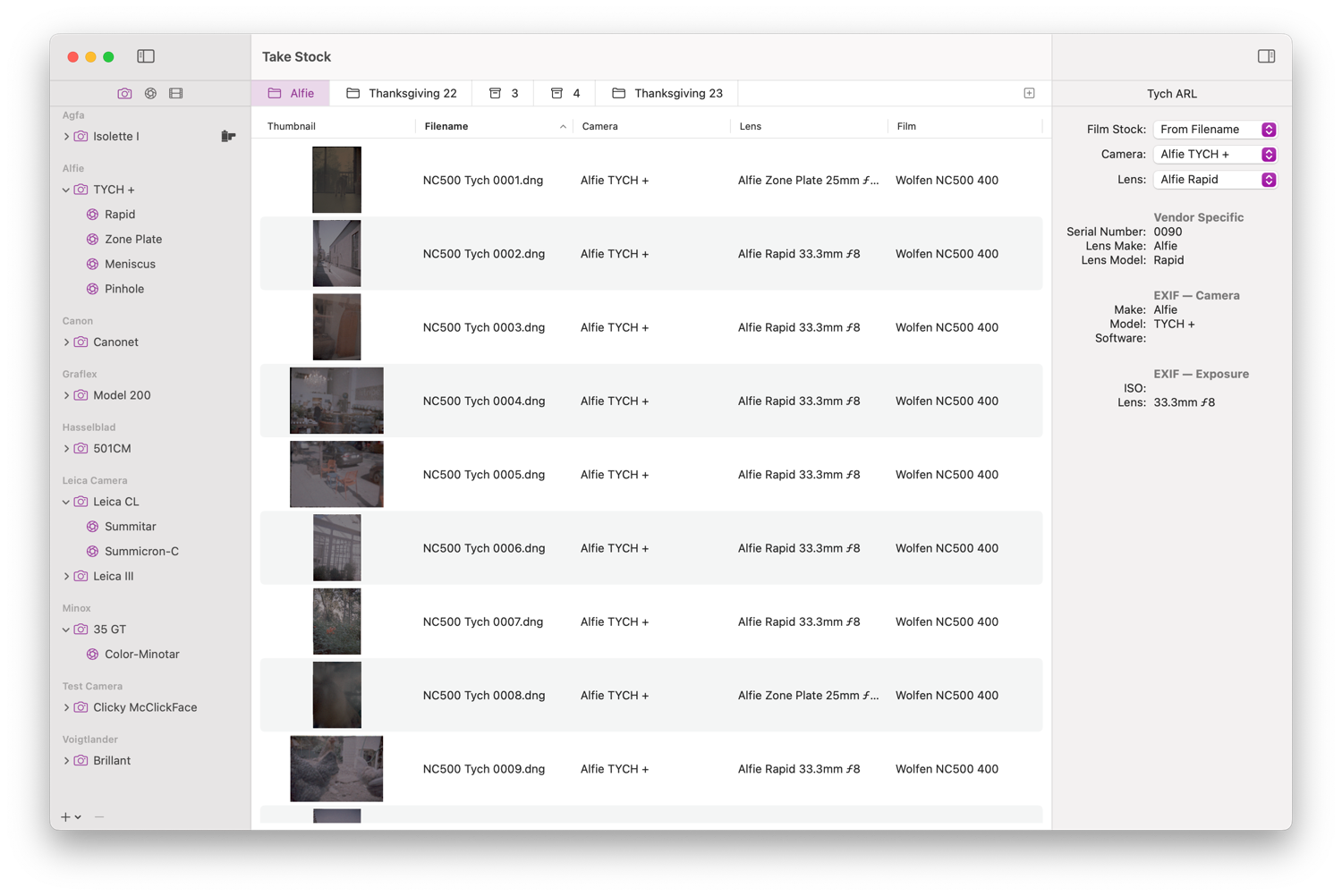Adding Proper Metadata to Film Scans
06 Dec 2023 ∞
I have a fairly extensive1 collection of film cameras. Everything from Kodak to Leica to Hasselblad to Minox. Most of them work and are fun to shoot with. This, however, isn't a camera review2. It's instead about my great obsession with putting metadata where it belongs.
I use VueScan and a Nikon CoolScan to scan all the film I get back from the lab, the resulting images are great, the DAM situation isn't. I want as much information about the photo as possible, both in terms of scanned resolution but also the information about the photo. Film cameras, as it happens, aren't great at applying their own metadata.
In the past I've used Capturebot to apply camera, lens, and film stock metadata to my scans. This involved maintaining a spreadsheet with a complicated mix of all that information by hand. The table looks a little something like this:
| Filename | Make | Model | Lens Make | Lens Model | Focal Length | Film | ISO |
|---|---|---|---|---|---|---|---|
| Canonet | Canon | Canonet | Canon | 40 | |||
| HassV | Hasselblad | 501CM | Zeiss | ||||
| RAP100F | Fuji RAP100F | 100 | |||||
| 35GT | Minox | 35 GT | Minox | Color-Minotar f/2.8 | 35 | ||
| P3200 | Kodak T-Max P3200 | 3200 | |||||
| RPX | Rollei RPX 100 | 100 |
Even with all of that I didn't have all of the metadata combinations. I have, for instance, multiple lenses for the Hasselblad but only one line for all of them, so the specific lens is missing. I could of course add separate rows and filenames for each, but it just becomes a lot to manage.
About a month ago I'd just gotten some film back from the lab and had A Thought: what if I just built an entirely new application specifically for writing proper metadata to film scans? I told myself I wouldn't do it. Three days later I had a working proof-of-concept.

The aforementioned prototype quickly grew into a new app: Take Stock. Which, I'm going to mention now, is available in beta on TestFlight. I think Take Stock is the easiest way to embed proper EXIF metadata to your film scans, it's also a great way to keep tabs on your collection.
Take Stock attempts to add as much metadata as possible to each image. The obvious ones are camera & lens makes and models, ISO, focal length & aperture3. After scouring Exiftool's metadata tables, I also tried to include more esoteric tags, like the lens specification which gives the full zoom and aperture range of a lens. Anything that makes sense and I can find the appropriate tag for is fair game.
The core of Take Stock is your collection of cameras, lenses, and film stocks. You enter the details about your cameras, lenses, and the film you shoot which you can then select to embed in photos. You can also select that info ahead of time, which generates a filename you can give to your scans to automatically select the proper camera, lens, and film.
You can add individual images or entire folders (which update automatically) to Take Stock, then go through to double check the metadata or make adjustments to specific images. Once you're satisfied you export that metadata which is embedded into the image file. Any photo application that reads EXIF tags will read the new metadata.
As an added bonus you can also track which film is loaded in a camera, because not all cameras have an ISO setting, a place to slide a box flap, or even a window indicating whether film is loaded.
The entire application was built in SwiftUI with SwiftData as the model layer, which means it synchs via iCloud. I also massively improved my Exiftool wrapping library, SwiftEXIF, which powers all of the actual metadata writing.
If you shoot film and care about metadata (even a little) do check out the beta and let me know what you think.